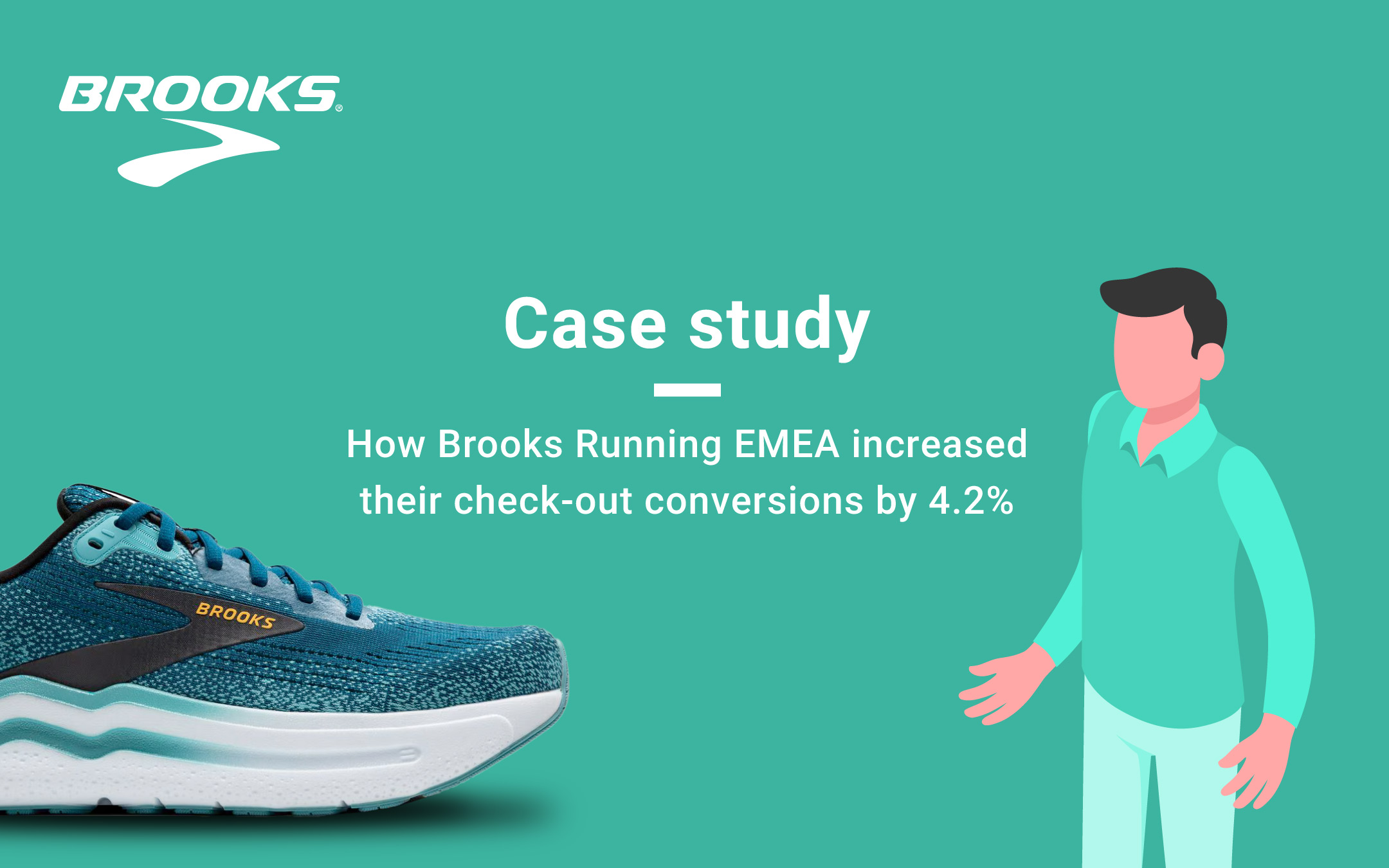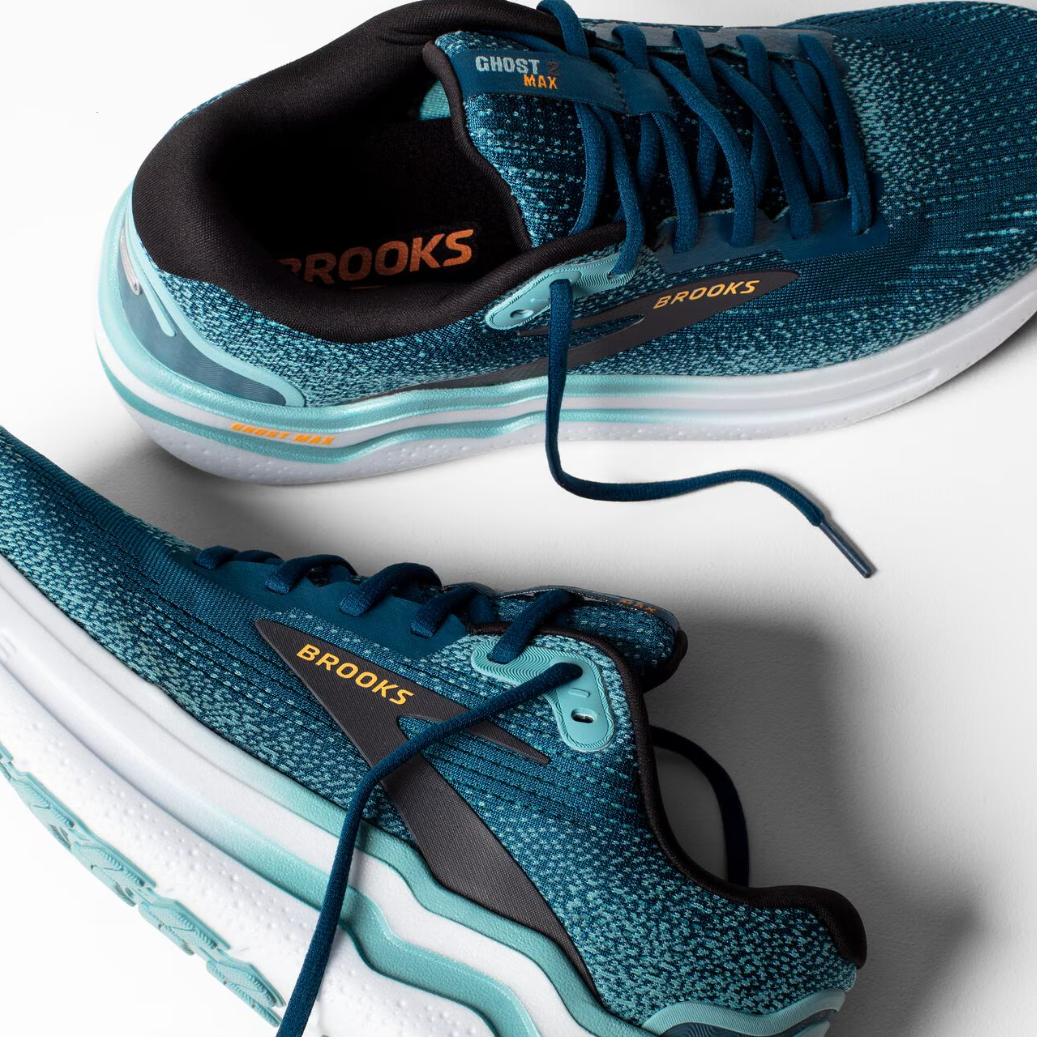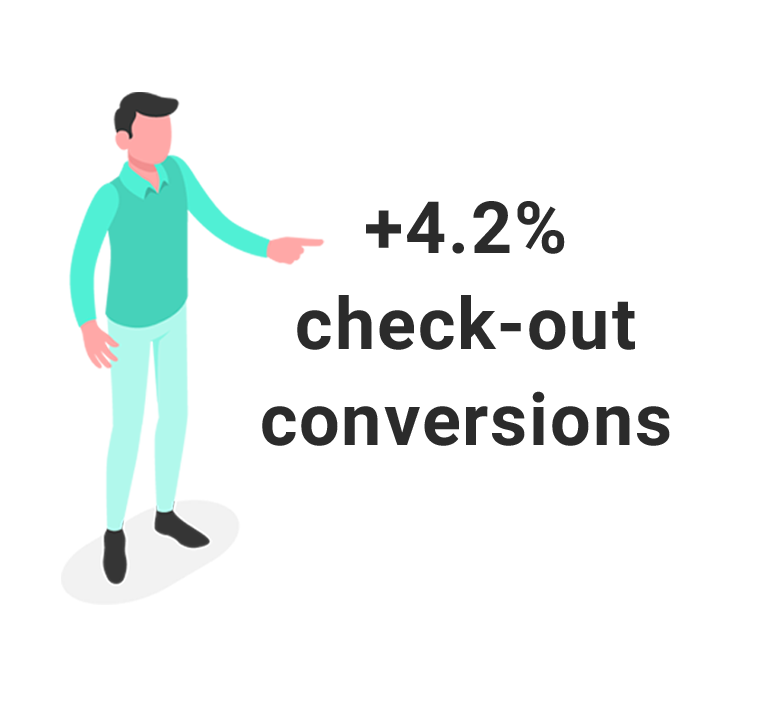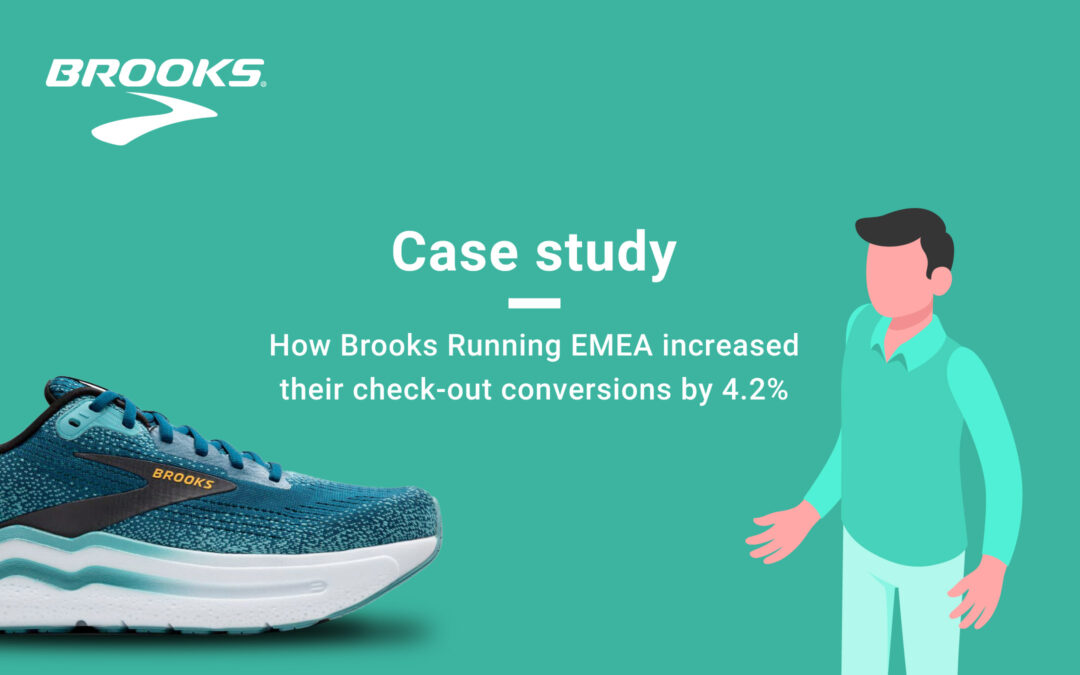
Brooks Running case study introduction
Brooks Running, an American sports equipment company headquartered in Seattle, Washington, specialises in designing and marketing high-performance shoes, clothing, and accessories for runners. With their gear enjoyed by runners in over 50 countries worldwide, Brooks Running achieved a turnover of €1.2B in 2022. The EMEA team, based in the historic Olympic Stadium in Amsterdam, manages 13 localised e-commerce websites based on a central platform, driving the brand’s presence across Europe. In this case study, we explore the strategies and initiatives that have propelled Brooks Running’s digital success in the EMEA region with the help of Exatom.
Challenge of form optimisation
Brooks strives to eliminate all possible friction in their online journeys to ensure runners have the best possible experience and access to top-quality products. After overhauling their entire e-commerce architecture and launching a brand-new UI in 2021, the team collaborated with Exatom to identify further improvement opportunities. They focused on enhancing the check-out process, account registration, and product configurators. Existing analytics tools didn’t provide sufficient insights on where and why runners drop off on Brooks’ forms and check-out.

The solution
In 2022, Exatom was implemented across the four core market websites in Europe, enabling in-depth experience analysis and optimization for individual markets as well as benchmarking between them.
Insights from Form Experience Analytics
In the initial phase, the team identified several technical and UX friction points through form experience analytics. These insights led to significant improvements, which were then scaled to all EMEA markets. Key issues addressed included:
- Incomplete field validations
- Incorrect HTML input types for some fields
- Missing auto-fill settings
- Specific browser friction points
- General UX friction points
Scaling Implementation in 2023
In 2023, the focus shifted to scaling Exatom’s implementation to all European geographies. This expansion enabled the team to extrapolate successful strategies and identify further growth opportunities.
Smart Tooltips to nudge visitors
Brooks Running, an early adopter of Exatom’s Smart Tooltips, leveraged this technology to enhance flexibility in guiding and supporting runners through their online journeys. Smart Tooltips provided contextual nudges to help users navigate around identified UX friction points and technical hurdles without requiring developer intervention. In the Exatom platform, the tooltip campaigns were set up in an A/B test against a control group.
These tooltips also played a crucial role in internal decision-making, serving as a robust source of information for development. Data-driven decisions based on Exatom’s insights became integral to the global checkout process. Many frictions that were addressed might have gone unnoticed without these insights, underscoring the value of Exatom for Brooks Running.

The outcomes
Strong ROI and Cost Reduction
The implementation of Exatom has delivered a strong return on investment (ROI) by generating additional revenue and reducing costs in the customer service department due to fewer delivery problems, particularly in markets where address services are less precise.
Enhanced Trust and Collaboration
These positive outcomes have fostered significant trust between teams regarding both data and recommendations. As the team continues to delve deeper into granular details, redesigns are pre-tested, and ideas are validated using Exatom’s insights. Results have been consistently positive across various scenarios, and the team remains committed to continuous improvement.
Significant Conversion Growth & Error reduction
- Increased conversion rate in the check-out: +4.2%
- Reduced error rates, i.e. on the password field: -44%
By zeroing into specific fields we can ensure that our forms are optimized down to minor details missed in our UX research process. Examples include ensuring that numeric only fields are presented with the correct keyboard on mobile experiences or inserting tooltips where we didn’t’ realise there were friction points in our user flows.
The drop-off visualization offers insights we didn’t have before in regards to the resubmits and fails. Coupled with the session replay function of the platform allows us to quickly access the exact moment these users drop off and understand the why.
On top of the deeper analysis that we have unlocked, the automated alerts on form completion rates have helped us identify bugs and issues faster than we could have done so previously. Resulting in fewer loss conversions.”
